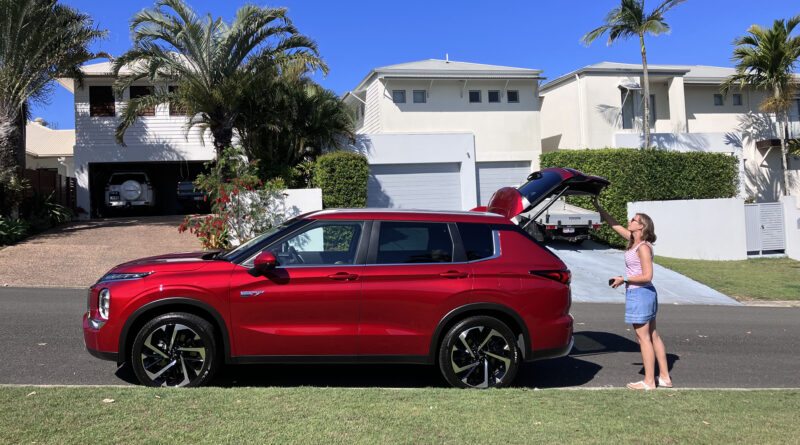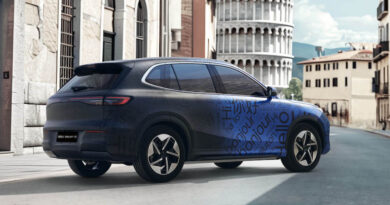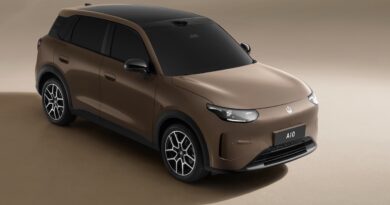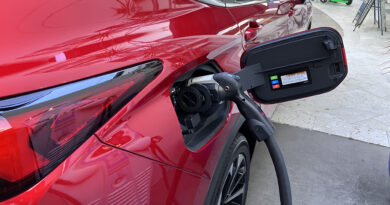Mitsubishi Outlander PHEV review: Plug-in SUV saves money, comes at a cost
Now an eight-year veteran on the Australian scene, the Mitsubishi Outlander PHEV was the world’s first plug-in hybrid SUV.
A new generation of the pioneering mid-sizer has just launched, with 45 per cent larger battery (now 20kWh), a pure electric range of up to 84km (NEDC), all-wheel-drive and seating for up to seven.
But it’s had a chunky price rise over the old model. We tested the $66,000 (approx) drive-away Outlander PHEV Aspire five-seater to see how it works for an active family of four.
What is it?
The Outlander PHEV’s on the larger end of the mid-size SUV segment, allowing a third row of seats for super-breeders. Entry level ES ($54,490) and Aspire ($60,990) offer five seats; the Exceed ($65,990) and Exceed Tourer ($68,490) are your picks should you need seven chairs. All prices are before on-roads.
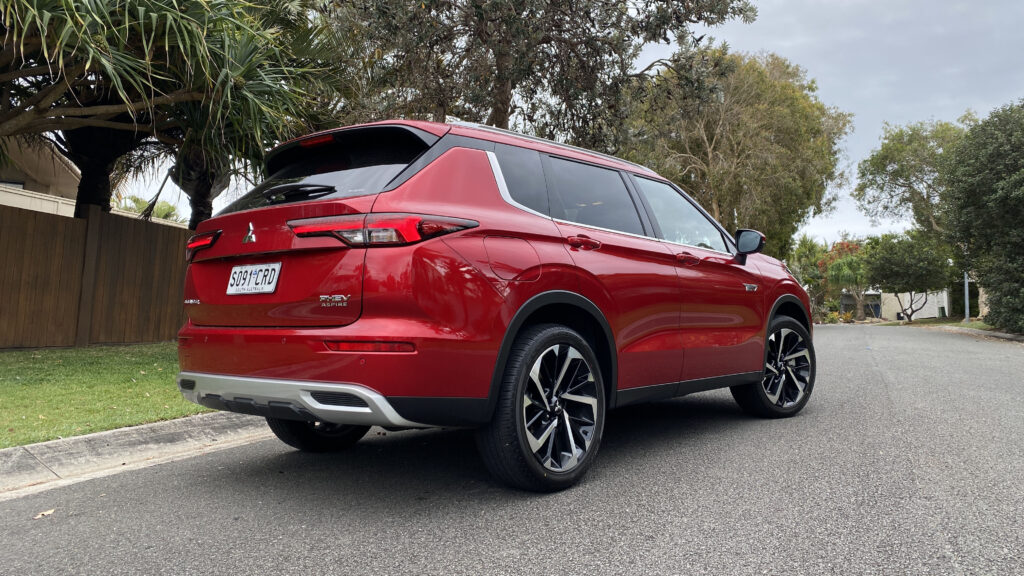
It’s a ‘5+2’ rather than a ‘proper’ seven seat large SUV, meaning those two rear seats are best suited to children or for very occasional use. Either way, the old Outlander PHEV didn’t offer seating for seven, so it’s a huge boon the new one can.
It shares an all-new platform with the purely petrol Outlander version. Under the PHEV’s bonnet there’s a 2.4-litre combustion petrol engine allied with twin electric motors, a 20kWh lithium-ion battery pack and all-wheel-drive.
Is it good value?
For a plug-in hybrid it is, but those prices are some $15,000 more than the equivalent Outlander petrol versions. Ergo, it’ll take you a very long time and lots of kilometres to recoup the cost if you were hoping to save money on fuel.
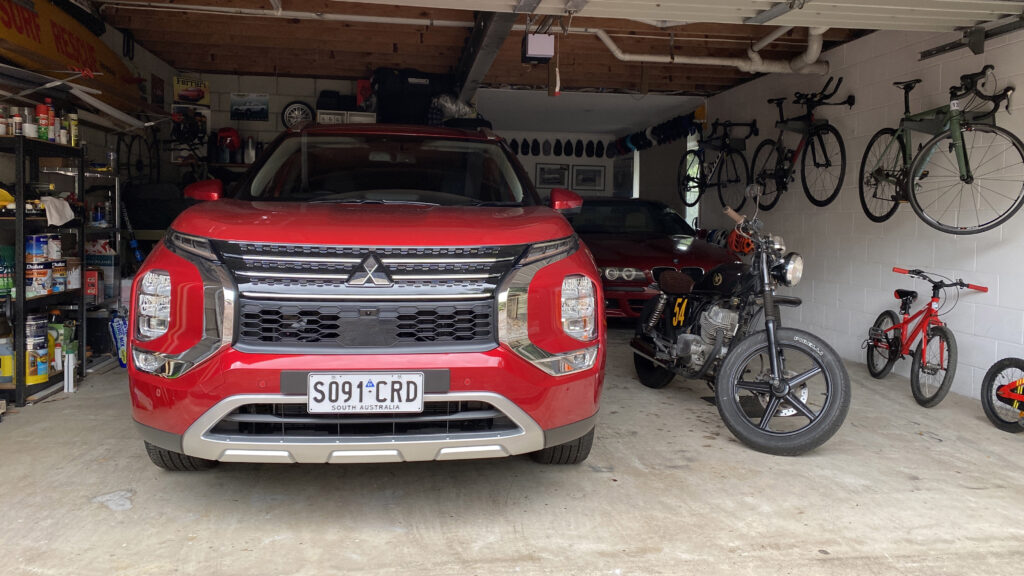
Rivals include the Ford Escape ST-Line PHEV ($54,440, 69km electric range) and Cupra Formentor VZe ($60,990, 50km range). Mazda’s more premium CX-60 PHEV will be a rival when it lands in early 2023, but its price could nudge $80,000.
What do I get?
Specification is mighty impressive. Our test Aspire scores 20-inch alloy wheels, LED headlights and DRLs, faux leather/suede upholstery, power driver’s seat, heated front seats, 9-inch infotainment screen, 12.3-inch digital instrument cluster, 10.8-inch colour head-up display, wireless Apple CarPlay, wired Android Auto, wireless smartphone charging, knurled rotary drive mode dial, power tailgate and keyless operation.
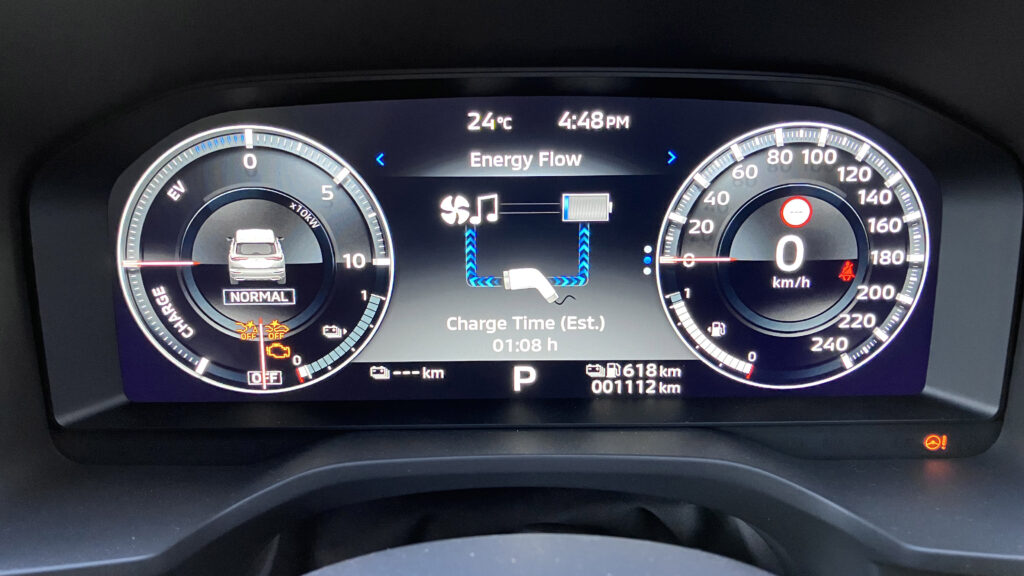
Safety kit also runs deep. There’s a Forward Collision Mitigation system (or Autonomous Emergency Braking as it’s commonly known) with pedestrian and cyclist detection, Adaptive Cruise Control, Predictive Forward Collision Mitigation, Emergency Lane Assist, Lane Departure Prevention, Lane Departure Warning, Blind Spot Warning, Traffic Sign Recognition, Driver Attention Alert, Rear Cross Traffic Alert, Rear Automatic Braking, 360-degree camera and a 5 Star ANCAP rating based on the latest 2022 protocols.
It’ll also tow 1600kg.
How does the PHEV part work?
A front electric motor generates 85kW (the old Outlander PHEV’s offered only 60kW), while the rear motor gives a hefty 100kW, up from 70kW previously.
Start it up and the default drive mode (NORMAL) does the drivetrain thinking for you. It optimises electric and petrol-electric hybrid drive depending on torque demand and the battery state of charge.
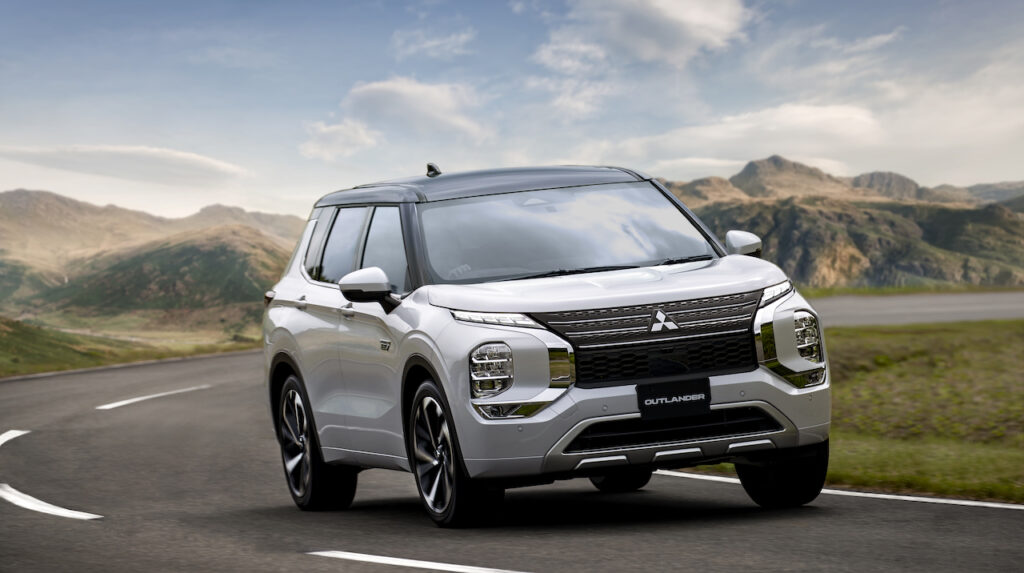
As we live in an urban area, being able to select a dedicated EV priority mode for a pure EV driving experience is preferred. Like many town folk, typical drives are under 50km/h when it’s busy – ideal EV territory.
The PHEV does so in impressive silence with a side-helping of super smooth. It really is a slick operator in the urban snarl, feeling just like a pure electric car. Even when you stomp on the throttle the petrol engine maintains its slumber. Only when you exhaust battery charge will it inform you this pure EV mode is no longer possible.
When we consider the average Australian daily commute in just over 30km, the PHEV’s 84km pure electric range will cover this and then some. All it requires is a battery charge top-up at day’s end, simply done via a domestic socket and the provided charge cable.
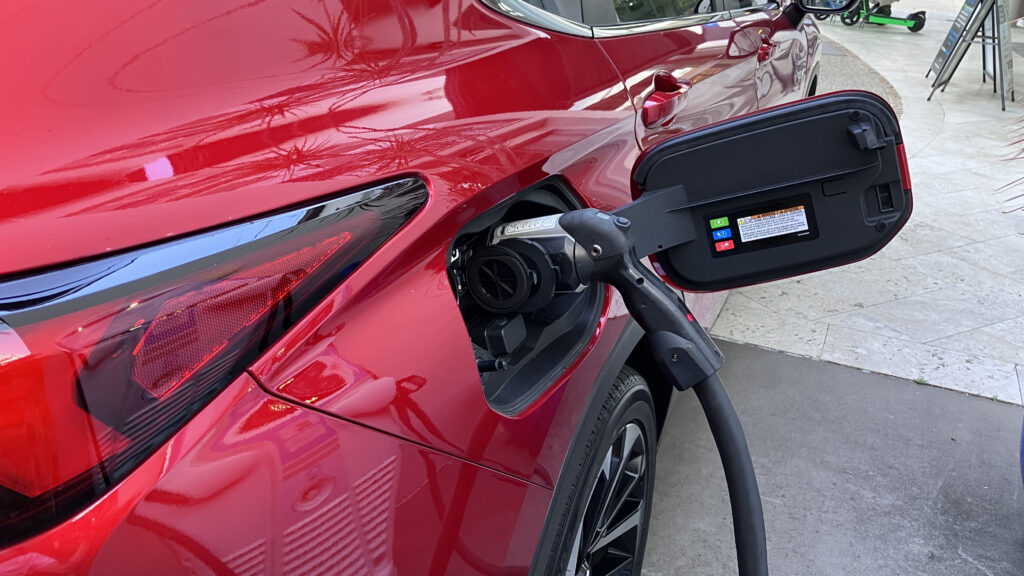
If your journey starts with a clear highway drive but you know you’ll be hitting the city and traffic later on, a SAVE mode maintains the current electric range and prioritises the petrol engine.
With PHEVs at their most fuel-saving at low speeds, this ensures you don’t exhaust your battery before reaching built-up areas with slower traffic and more stop-starts. The Outlander will always prioritise using battery power first, so remembering to hit that SAVE button is imperative if you don’t want to exhaust it.
Is it good to drive?
Use it as family transport in town and on the highway and it’s very fit for purpose. Easy to drive, a comfy cruiser and it doesn’t feel enormous or cumbersome on the road. The electric punch gives it decent zip from standstill, and when the petrol engine and electric motors work in unison the Outlander PHEV pulls away with surprising brawn.
It’s a slick system too. You hardly notice the shift from pure EV running to the petrol engine firing up, and that’s rare indeed in PHEVs.
The 20-inch wheels and skinny tyres make it crashy on poor urban roads, and its 2018kg weight ensures it isn’t the most agile or nimble mid-size SUV. Handling’s pretty good but there’s some body roll in corners and on roundabouts. While I’m grumbling, its lane keep system is too nannying and isn’t simple to switch off.
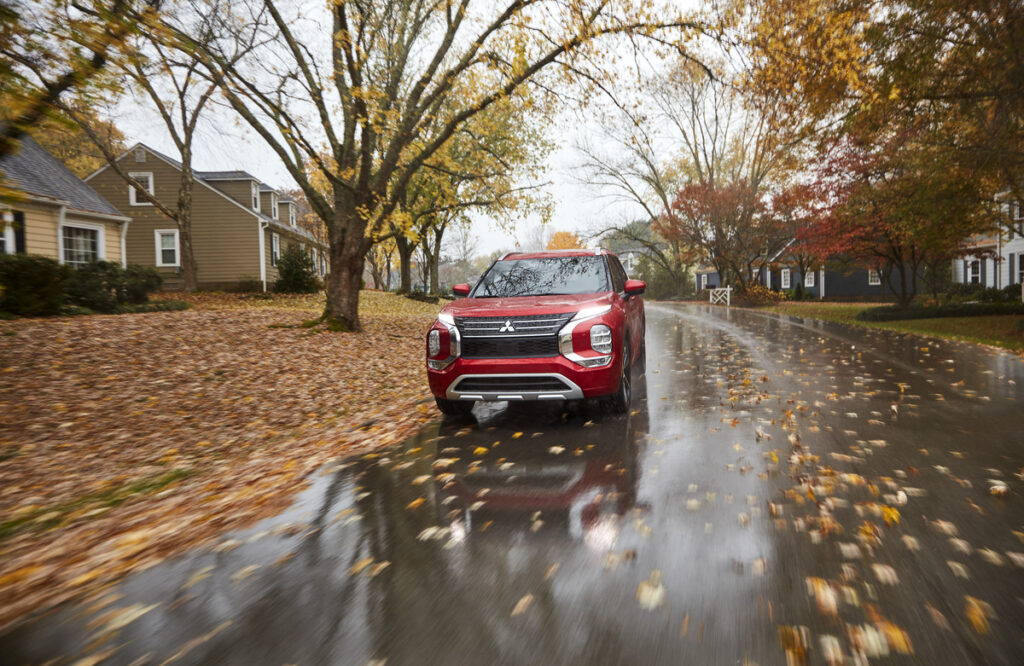
Being all-wheel-drive it does feel pretty stable and safe. Exciting-sounding Super All-Wheel Control adjusts the AWD system to suit the road surface. This helps the Outlander feel quite planted in corners, even with the softly sprung suspension.
How’s the cabin?
Unlike the rather wild exterior design, Mitsubishi’s played it safe inside. The digital screens look flash, but otherwise it’s a bit devoid of flair and when you dig deeper some of the interior plastics feel cheap.
There’s excellent legroom and decent headroom for adults in the rear seats. Although our test car was just a five seater, we have sampled the seven seat pure petrol version.
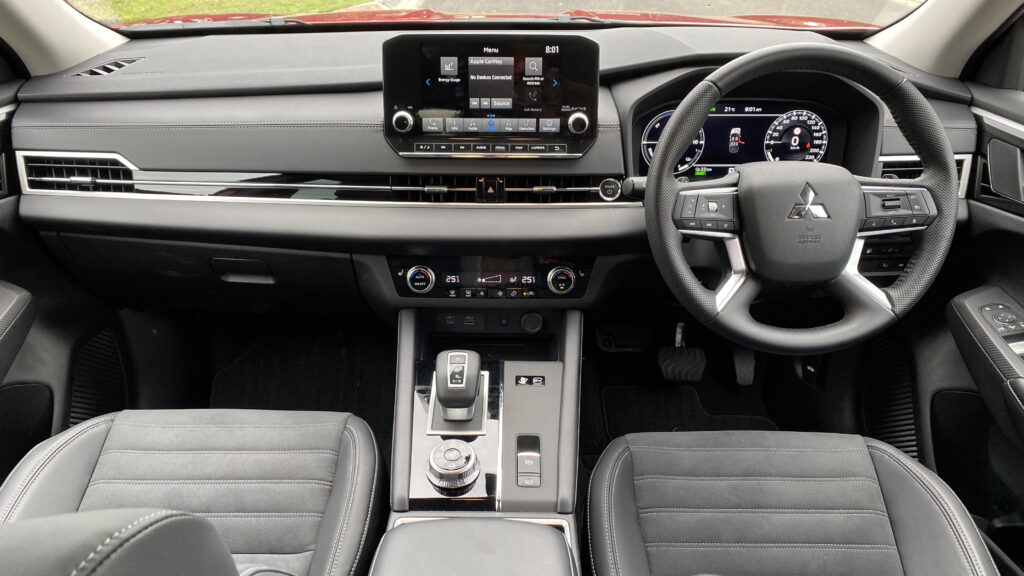
It feels very much a 5+2. You need to slide the middle row seats forward to give any sort of leg space for rear passengers, and adults or larger children will feel claustrophobic and squeezed.
If you go the seven seat version and all chairs are in place, boot space is 163 litres. Our five-seater has 485 litres and with the second row folded down there’s ample space to fit an adult bike with its front wheel still on.
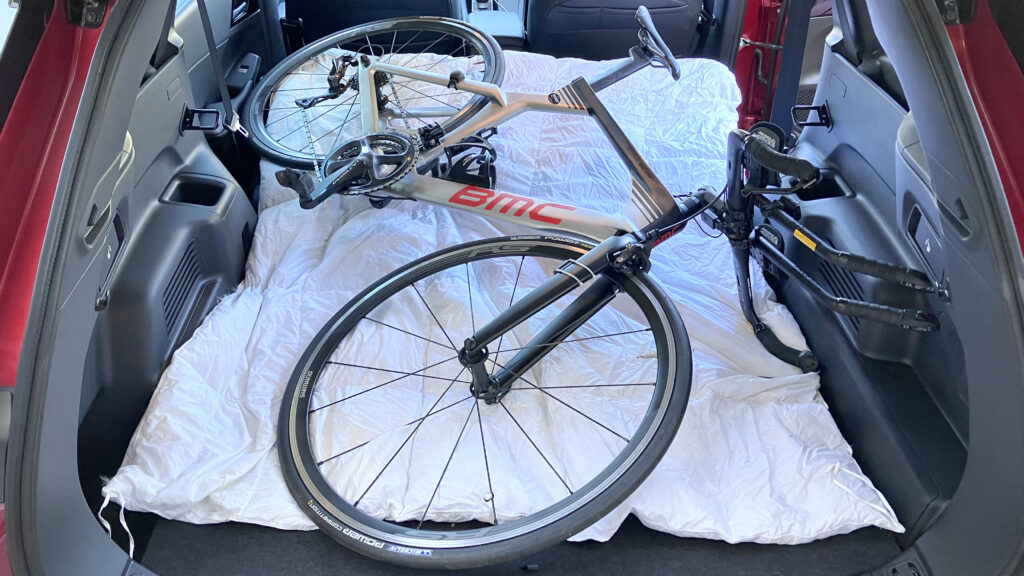
Is there regeneration?
There is. And you get six levels to choose from. Steering wheel paddles increase or lessen the regeneration rate. If you’re heading down a steep hill you can coast in the highest regen level and enjoy lots of happy electrons flooding back into the battery.
The new PHEV also brings an ‘Innovative Pedal Operation’ mode at the press of a button. This allows for one-pedal driving, the car coming to a complete stop with regen without the need for the brake.
You can also use the 98kW petrol engine to power the on-board generator, which in turn charges the battery pack.
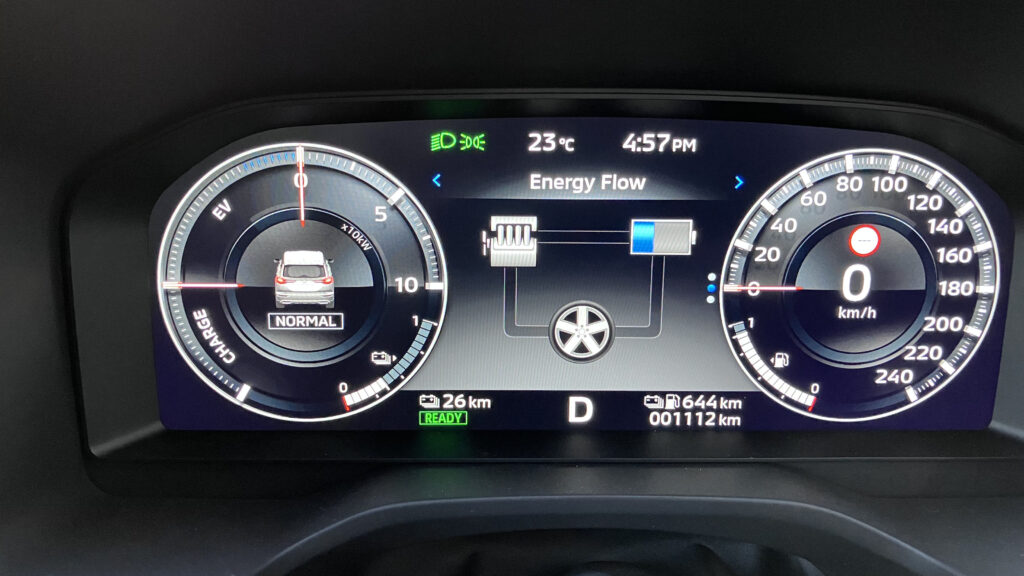
How do I charge the battery?
At a public fast charger you can get from empty to 80 per cent battery capacity in 38 minutes.
Our real-world test used a 50kW Tritium DC public fast charger. We started with 22% battery remaining, and the estimated time to 100 per cent full was 70 minutes.
At home you can plug it in to a standard power point and you’ll go from 0-100 per cent charge in 9.5 hours. Overnight, basically. The job’s done in 6.5 hours if you fit a home AC wallbox or use a public AC charger.
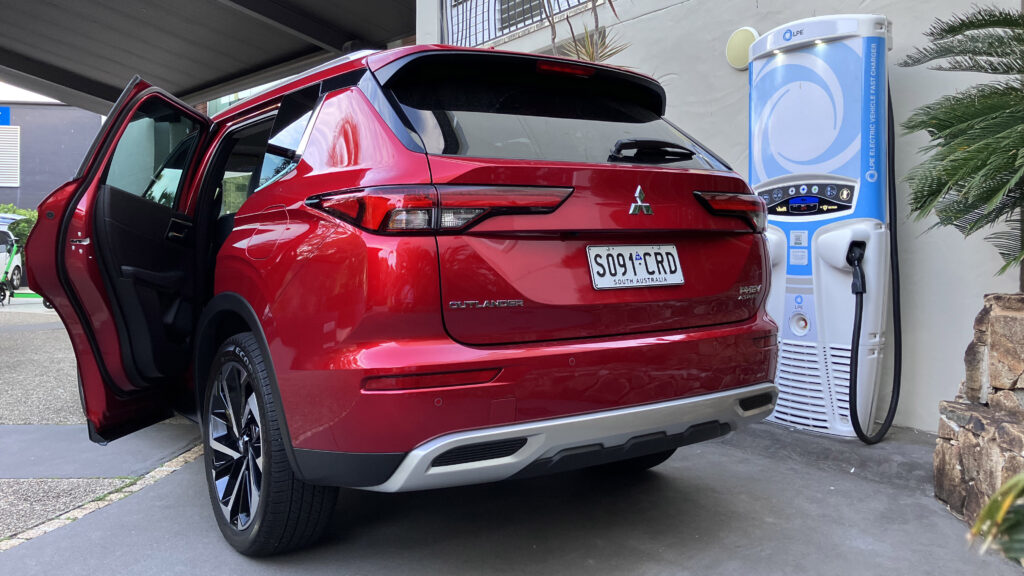
Any cool features?
Oh yes. It’s a mobile energy store. Unlike many full EVs, the Outlander PHEV is V2X capable. This means energy stored in the 20kWh battery can be used to power your home or send energy back to the grid.
If you have solar you can use the Outlander PHEV as an additional battery cell for your home. It can draw power from your solar system (or the grid during cheaper, off-peak hours) and store the energy on board.
All grades bar the entry-level ES have two on-board 240V AC three-pin power points. These provide up to 1500-Watt Vehicle-to-Load capability, so you can power camping equipment, an e-bike, e-scooter, domestic appliances and more.
How’s the cost of ownership?
Pretty compelling. Mitsubishi offers a 10 year/200,000km warranty, as long as you service within the dealer network. It’s a no-brainer to do so. The first five services are $299 each (every 12 months/15,000km), while the next five are a reasonable $599, $299, $599, $399 and $799.
Mitsubishi guarantees the battery will retain at least 66% of it useable energy capacity for eight years/160,000km.
It’s hard to give a true figure for the Outlander PHEV’s fuel economy. It’s totally dependent on how you use it. The official figure is 1.5L/100km, but if you head off on a 800km road trip you will, of course, see numbers similar to a pure petrol Outlander. Take it on a city trip and nominate just EV mode and you’ll return 0L/100km – free and green fuel if you can charge the battery with solar.
Verdict?
If you’re reticent to make the shift from a petrol/diesel vehicle to something electrified, the Outlander PHEV proves a fuss-free gateway.
It excels in its ‘normalness’ to drive. Stay in default drive mode and you’ll barely notice if it’s using its battery, petrol engine or a combination of the two. It really is that well-engineered.
Pure electric range is excellent for a family SUV able to carry up to seven. Our test showed the 84km range to be optimistic, but not by a great deal. The PHEV will carry out most daily family duties – school run, shopping, away sports matches and commutes – with the petrol engine never firing up.
Its hefty $15,000 premium over the equivalent petrol Outlander is the main sticking point. The PHEV does offer mighty fuel savings for the right buyer – those with home solar have the potential to use free, green energy for all daily drives if they’re reasonably short.
But the plug-in’s smoothness and serenity versus a purely petrol Mitsi makes it feel a very different vehicle, and one worth paying the extra for.

